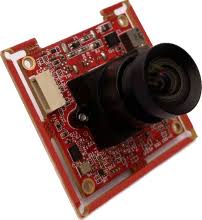Introduction: In the realm of cutting-edge imaging technology, MIPI cameras have emerged as game-changers, revolutionizing the way we capture and perceive the world around us. This blog aims to delve into the intricacies of MIPI cameras, shedding light on their significance, functionality, and the myriad applications that make them indispensable in various industries.
Understanding MIPI Cameras: MIPI (Mobile Industry Processor Interface) cameras are at the forefront of the imaging revolution, designed to meet the ever-growing demands for high-quality imaging in mobile devices, automotive systems, industrial applications, and more. These cameras leverage the MIPI CSI-2 (Camera Serial Interface) standard, enabling seamless communication between image sensors and application processors.
Key Features of MIPI Cameras:
-
High Data Throughput: MIPI cameras boast high data throughput, ensuring the rapid transfer of image data with minimal latency. This feature is crucial for capturing high-resolution images and videos in real-time.
-
Low Power Consumption: With a focus on efficiency, MIPI cameras are designed to operate on low power, making them ideal for battery-powered devices such as smartphones, tablets, and portable medical devices.
-
Compact Form Factor: MIPI cameras come in compact sizes, facilitating their integration into space-constrained devices without compromising on image quality. This feature is particularly advantageous in the design of slim and sleek gadgets.
Applications of MIPI Cameras:
-
Mobile Devices: MIPI cameras are the backbone of smartphone cameras, capturing stunning photos and facilitating high-definition video recording. The standard has evolved to support multiple cameras in a single device, enabling advanced features like depth sensing and augmented reality.
-
Automotive Systems: In the automotive industry, MIPI cameras play a crucial role in applications such as rearview cameras, parking assistance systems, and advanced driver-assistance systems (ADAS). The high data throughput ensures real-time processing for enhanced safety.
-
Industrial Imaging: MIPI cameras find applications in industrial settings, contributing to tasks such as quality control, machine vision, and robotics. The reliability and performance of MIPI cameras make them well-suited for demanding industrial environments.
Challenges and Innovations in MIPI Camera Technology: Despite their numerous advantages, MIPI cameras face challenges related to compatibility issues, signal integrity, and evolving industry standards. Ongoing innovations aim to address these challenges, with advancements in image sensor technology, compression techniques, and interface enhancements.
Conclusion: In conclusion, MIPI cameras have transformed the landscape of imaging technology, influencing a wide array of industries and applications. As we continue to witness advancements in camera technology, MIPI cameras are poised to remain at the forefront, delivering exceptional performance and enabling new possibilities in the world of visual innovation. Stay tuned as the journey of MIPI cameras unfolds, shaping the future of imaging experiences across diverse domains.


No comments yet